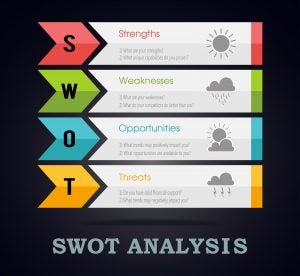May 15, 2017
[GUEST BLOG] Business Plan Blueprint
by David Waring, entrepreneur and College of Business grad
Business Plan Blueprint
The first step in your successful business journey is to lay out a blueprint of your business plan. This will give you a solid visualization of your goals and what is needed to achieve them. A business plan also will help you avoid wasting time and resources because you will have gone through all the “what if” scenarios during your brainstorming.
What exactly do you need when developing a business plan?
Business Summary
First and foremost, you want to summarize what you want to accomplish with your business. State what type of business you will be conducting and the goals you wish to achieve. Adding a brief history of your personal background will help show your knowledge, skills, and experience that will play an important role for your business. The summary will be how you show where you want your company to go and the rest will be the blueprint of the pathway your business will take.
Mission statement
Most successful businesses establish a mission statement that will describe the company, why they exist, and their core values. Having a well-written statement will help inspire and motivate those associated with the business.
Your Business Versus the Competition
No matter what niche you decide on, the most important factor you need to focus on is differentiating your business from the competitors. Finding other ways to bring value to your business instead of imitating the competition will bring interested people to you. Make sure your differences are outlined in your business plan.
Analyze Your Market Niche
Gather adequate information about your niche so that you can make solid business decisions. Conducting a SWOT (Strengths, Weaknesses, Opportunities and Threats) analysis shows how your strengths and weaknesses stack up to the competition while suggesting ways to take advantage of the opportunities.
Developmental Plan
Create a strategy to plan out how you will deal with the market and competitors. It will show
Financial Statement and Projection
- Sales Forecast – Start with a spreadsheet that shows a forecast of projecting sales over the course of 3 to 5 years.
- Expense Budget – Create an expense budget sheet that shows your understanding of it will actually cost for your sales forecast.
- Cash-flow Statement – This statement will show the projection of money that will move in and out of the business.
- Income Projections – Create a profit and loss statement using the data from the sales forecast, expense budget, and the cash-flow statement.
- Assets and Liabilities – This statement will show the assets and liabilities that are not included in the profit and loss statement and will show the projected net worth of your business at the end of the year.
Identified Potential Risks
The business plan describes all that is needed to be successful and should also include any potential risks.
- Show the risks that may occur that decreases the attractive value to current or potential customers.
- Display potential events that may prevent the company from living up to its mission statement or promise to their customers.
- Identify risks that may interfere with the growth of the business.
Rank risks based on the impact it has financially and the likelihood of it occurring. Then place them in categories of risk responses.
- Mitigate Risks– Events with a small financial impact but a high potential of occurrence. Use management control systems to respond to reduce the potential loss from the risk.
- Transfer Risks – Events with a large financial impact but a low likelihood of occurring. Transfer some or all of the risk by purchasing insurance, outsourcing, or a formed partnership.
- Accept Risks – If the cost to mitigate a risk is higher than the cost to bear the risk based on a cost-benefit analysis, then just accept it while continuing to monitor it.
- Avoid Risks – Events with a large financial impact and a high probability of occurrence. Avoiding the event is the best strategy.
Exit strategy
Finally, include an exit strategy in your business plan blueprint. It is a strategic plan that gives the business owner a way to sell their investment in the business while making a nice profit if the business is successful.
How to Streamline the Process of Creating a Business Plan
A good way for entrepreneurs and small business owners to get started with a business plan is to do a simple search for business plan templates. Another way to make the process of creating a business plan even easier is to use business plan software. This software allows you to create a professional business plan, including charts and spreadsheets with financial projections. Some also include a large library of sample business plans for you to learn from.
Conclusion
There are many things to take into consideration with developing a business plan. Once you have created the business plan from what you envision, you can start put the plan into action. As you and your business grow, you may find hiccups and obstacles are constantly being thrown your way. The great thing about having a business plan is that it can adapt and evolve. Just by having a thorough plan in place, will help ensure the business will continue to run smoothly, regardless.
David Waring is the co-founder and publisher of Fit Small Business, a rapidly growing website that reaches over 600,000 small business readers a month. Prior to starting Fit Small Business, David served as a top executive at Forex Capital Markets LLC, which he joined as an initial employee and helped grow to a publicly traded company with over 700 employees.




